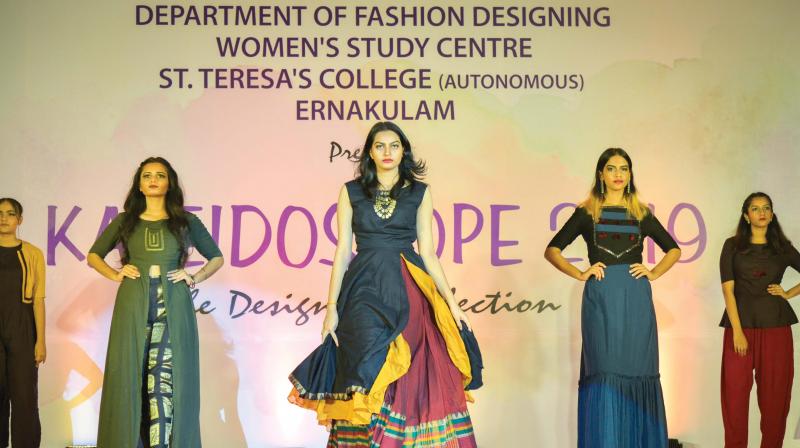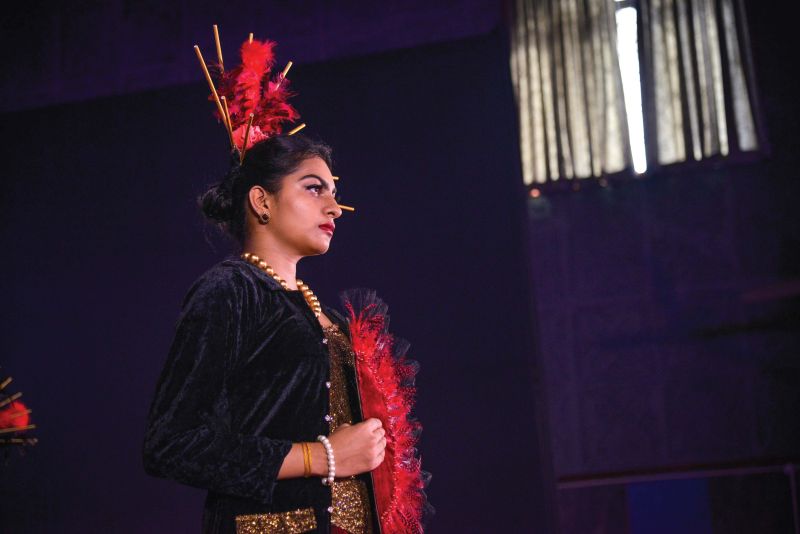Designing future

It can be a difficult task to articulate the power of fashion because it has the capacity to transcend borders and represent people. Presenting a new range of garments, for a designer, can be a mode of storytelling wherein he/she wants to tell something to the world. When the students of the Department of Fashion Designing at St. Teresa’s College got a chance to exhibit their ideas of fashion, it was a dream-come-true moment for them. They were entrusted with the duty of not only designing the garment, but also deciding the entire look of a model that included selecting accessories, selecting the models, photo shoot and finally choreographing the event.
Kaleidoscope 2019, the graduation show of the Fashion Designing students, saw students from the college walking the runway for their friends who designed the collection in different themes. There were as many as 17 designers and 17 different themes that took inspiration from the state bird of Kerala, Great Hornbill, to the ancient Greek culture.

However, it was not an easy task for the students to pull off something so massive. Elizabeth Nelson, one of the designers, agrees that it was a one-of-a-kind experience that has helped them understand the complexities associated with introducing new fashion. “Fashion is not only about designing garments. We are actually trying to tell a story through each piece of clothing that we make. My theme, Rococo, narrates how fashion evolved from the baroque style that consisted of garments with geometrical cuts woven out of rich fabrics in bright colours to rococo style, which gives importance to curves and flares in light fabric and pastel colours. I had presented five variations which narrated the evolution and the changes that rococo style underwent. To portray the transition, in one of the garments, though the bodice and skirt are given a geometrical finish, the sleeves have volume and flare. In another garment, I gave importance to the accessories like clutch with intricate embroideries and hand-fan that were typical of that era. There was also a period when these fans developed as a means of exchanging ideas,” she explains.

Elizabeth adds that it was indeed a tough job to select themes that were unique. Each participant had to suggest three themes of which one would be selected. The designers had to then submit the diagrams for each garment they were planning to execute. Once the designs were approved, they had to select the models, get the garments ready, conduct photo shoot, select appropriate music and then choreograph the event. “We referred to various fashion shows in order to get a hang of the choreography part and it was after organising this event completely that we gained the confidence with which we can now present our designs anywhere,” says Elizabeth, adding that it was with the support of their teachers that they could achieve this.
The other designers and there creations are; Ronak-by Sherin Treasa, Cube House- by Helana K.A, Venice Carnival- by Fathima Thahseen, Lady of Shallot-by Anna Shaji, Suifiducia- by Catherin Jobia Joseph, Sibylline- by Amitha S Ram, Hydgrangea- by Bessy Roy, Chinese Dragon- by Susan Joseph, Seven Deadly Sins- by Nikita Sara Varghese, Eclectism- by Amanda Tresa Thomas, Legame- by NivyaThampan, Thiraseela- by Sana K.P, Morning Cloak- by Faraha Bai, Chimera- by Vinduja Nandakumar, lady From Umritsar- by Parvathi Karunakaran C, Persophone- by Maria Jose.

